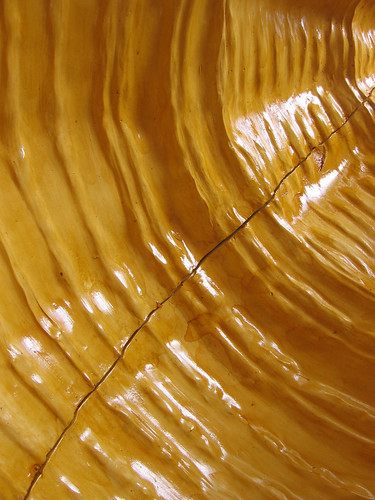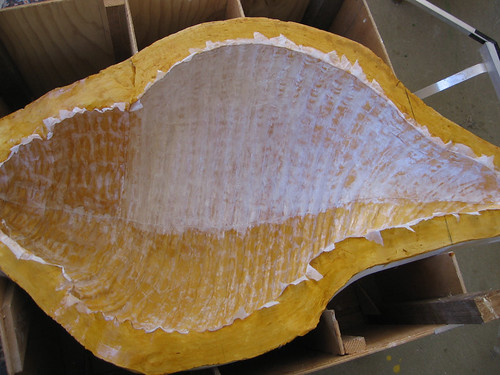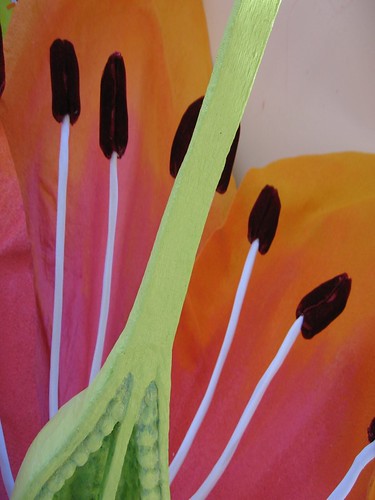I’ve promised myself to try to focus more on projects of my own, in between contract work for other people. I find it so easy to fritter time away when I’m not meeting other’s deadlines. So I’ve started back working on a big shell project I first started over 3 years ago. Back then I got as far as sculpting the shell out of clay, and making a ridiculously big and heavy plaster mold of it. It’s about a metre long. Luckily I did have the sense then to make a cradle on casters for it, so I don’t break my back trying to maneuver is around.
A few days ago I sealed the plaster with layers of shellac, which turned it this beautiful golden mustard colour.
Now I am paper mache-ing it inside with tissue paper. I want it to look flimsy and papery and almost transparent, but I don’t know how few layers I can get away with, and still have it come out of the mold intact. The idea of using very fine fibreglass is tempting, but I am sworn off working with fibreglass.
There are a few more photos at Flickr, where I’m making a photoset.






